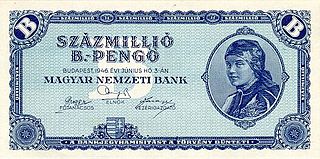
In economics, hyperinflation is a very high and typically accelerating inflation. It quickly erodes the real value of the local currency, as the prices of all goods increase. This causes people to minimize their holdings in that currency as they usually switch to more stable foreign currencies. Effective capital controls and currency substitution ("dollarization") are the orthodox solutions to ending short-term hyperinflation; however there are significant social and economic costs to these policies. Ineffective implementations of these solutions often exacerbate the situation. Many governments choose to attempt to solve structural issues without resorting to those solutions, with the goal of bringing inflation down slowly while minimizing social costs of further economic shocks.
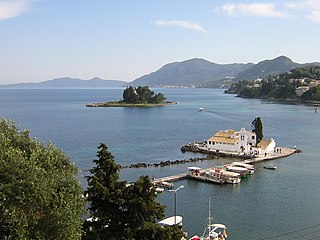
Corfu or Kerkyra is a Greek island in the Ionian Sea, of the Ionian Islands, and, including its small satellite islands, forms the margin of the nation's northwestern frontier with Albania. The island is part of the Corfu regional unit, and is administered by three municipalities with the islands of Othonoi, Ereikoussa, and Mathraki. The principal city of the island is also named Corfu. Corfu is home to the Ionian University.

The forint is the currency of Hungary. It was formerly divided into 100 fillér, but fillér coins are no longer in circulation. The introduction of the forint on 1 August 1946 was a crucial step in the post-World War II stabilisation of the Hungarian economy, and the currency remained relatively stable until the 1980s. Transition to a market economy in the early 1990s adversely affected the value of the forint; inflation peaked at 35% in 1991. Between 2001 and 2022, inflation was in single digits, and the forint has been declared fully convertible. In May 2022, inflation reached 10.7% amid the Russian invasion of Ukraine and economic uncertainty. As a member of the European Union, the long-term aim of the Hungarian government may be to replace the forint with the euro, although under the current government there is no target date for adopting the euro.

The krone was the official currency of Austria-Hungary from 1892 until the dissolution of the empire in 1918. The subunit was one hundredth of the main unit, and was called a Heller in the Austrian and a fillér in the Hungarian part of the Empire.

The Ionian Bank was a bank of issue established in 1839 in London to operate in the United States of the Ionian Islands, which was then a British protectorate. The bank moved its head office in Greece from Corfu to Athens in 1873, and expanded in Greece and the Eastern Mediterranean, including through the acquisition of Greece's Popular Bank in 1938. After losing its branches in Egypt to nationalization in 1956, the British parent entity sold its operations outside the United Kingdom. The Greek business, renamed Ionian and Popular Bank and nationalized in 1975, was eventually absorbed into Alpha Bank in 2000.
The Philharmonic Society of Corfu, or Old Philharmonic -to be distinguished from the other 17 bands on the island-, is a widely known community music band in Corfu, Greece.

Corfu or Kerkyra is a city and a former municipality on the island of Corfu, Ionian Islands, Greece. Since the 2019 local government reform, it is part of the municipality Central Corfu and Diapontian Islands. It is the capital of the municipality and of the Corfu regional unit. The city also serves as a capital for the region of the Ionian Islands. The city is a major tourist attraction and Greek regional centre and has played an important role in Greek history since antiquity.
Since 1867 there have been four successive currencies in Romania known as the leu. This article details the banknotes denominated in the leu and its subdivision the ban since 1917, with images.
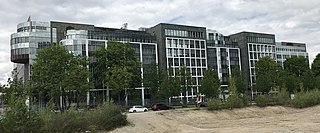
Giesecke+Devrient is a German company headquartered in Munich that provides banknote and securities printing, smart cards, and cash handling systems.

Count Ioannis Antonios Kapodistrias, sometimes anglicized as John Capodistrias, was a Greek statesman who was one of the most distinguished politicians and diplomats of 19th-century Europe.
The Capodistrias Museum – Center of Capodistrian Studies is a museum dedicated to the memory and life's work of Ioannis Kapodistrias. It is located in the area Koukouritsa of Evropouli in Corfu, Greece. Ioannis Kapodistrias was the first governor of Greece, Minister of Foreign Affairs of the Russian Empire, and a great diplomat, politician, and physician. The property was donated by Maria Desylla-Kapodistria, great granddaughter of Georgios Kapodistrias, younger brother of Ioannis Kapodistrias, and the only one of the brothers who married. The museum was established in 1981. Ioannis Kapodistrias' summer home in the rural area of Koukouritsa in his birthplace of Corfu houses the museum showcasing exhibits commemorating his life and accomplishments. Maria Desylla-Kapodistria, a former mayor of Corfu (1956–1959) and the first female mayor in Greece, donated the residence to the three primary cultural societies of Corfu specifically for that purpose. The museum also functions as a center for Kapodistrian and Corfiote studies.

Banknotes of the euro, the common currency of the eurozone, have been in circulation since the first series was issued in 2002. They are issued by the national central banks of the Eurosystem or the European Central Bank. The euro was established in 1999, but "for the first three years it was an invisible currency, used for accounting purposes only, e.g. in electronic payments". In 2002, notes and coins began to circulate. The euro rapidly took over from the former national currencies and slowly expanded around the European Union.
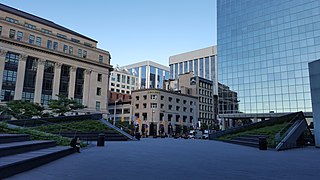
The Bank of Canada Museum, formerly known as the Currency Museum, opened in 1980 on the ground floor of the Bank of Canada building in Ottawa, Ontario. Temporarily closed in 2013 for major building renovations, the museum reopened in a new space on July 1, 2017, in a new building, with a completely new design and concept. It is, however, connected to the main building through the Bank of Canada's underground conference centre.

The five-euro note (€5) is the lowest value euro banknote. It has been used since the introduction of the euro in 2002. The note is used in the 25 countries that have it as their sole currency, which countries have a total population of about 350 million currently. In July 2024, there were approximately 2,211,000,000 five-euro banknotes in circulation around the eurozone. It is the fifth-most widely circulated denomination, accounting for 7.2% of the total banknotes. Estimates suggest that the average life of a five-euro banknote is less than a year before it is replaced due to wear.
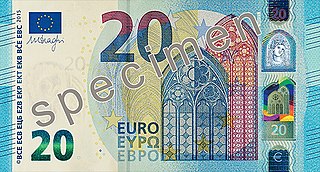
The twenty euro note (€20) is the third-lowest value euro banknote and has been used since the introduction of the euro in 2002. The note is used in the 25 countries that have it as their sole currency, which countries have a total population of about 350 million currently. In July 2024, there were approximately 4,818,000,000 twenty euro banknotes in circulation around the eurozone. It is the second most widely circulated denomination, accounting for 16.3% of the total banknotes. Estimates suggest that the average life of a twenty euro banknote is about two years before it is replaced due to wear.
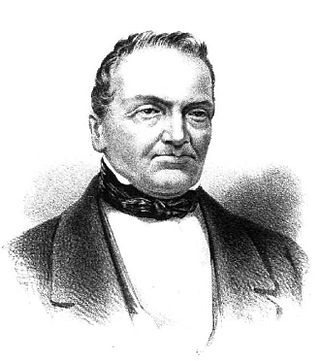
Georgios Stavros was a banker, benefactor and revolutionary from modern-day Greece. He was one of the founders and the first governor of the National Bank of Greece.

Charalambos Pachis was a Greek painter of the Heptanese school who specialized in landscapes and historical scenes.

Nikolaos Ventouras was a Greek artist and engraver.

The drachma was the official currency of modern Greece from 1832 until the launch of the euro in 2001.

Hyperinflation in Greece occurred between 1941 and 1946 during World War II and the Axis occupation. In the most comprehensive study, Michael R. Palairet of Central European University described it as an
extraordinary long fifty months hyperinflation



















